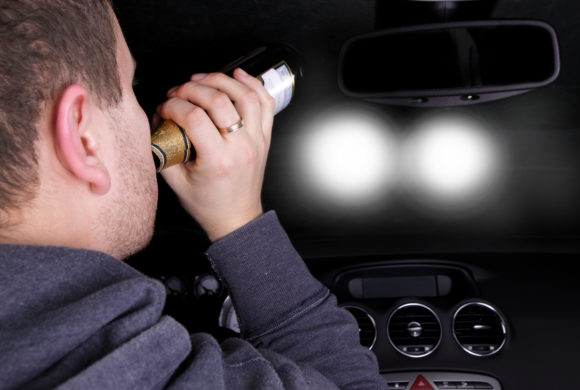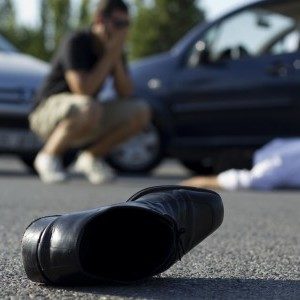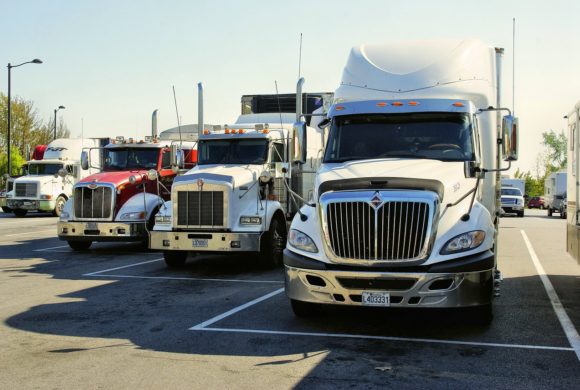
by Queener Law | Mar 15, 2018 | Tennessee, Trucking Accident
A Republican-sponsored bill in Congress would expand a pilot program under the FAST Act to allow drivers under the age of 21 who have commercial drivers’ licenses to drive large trucks across state lines, including in Tennessee. The previously passed pilot program allows drivers between the ages of 18 and 21 who are military veterans to drive commercial trucks across state lines, but other people in the age group may not. While the bill’s backers claim that the expansion is warranted because of the shortage of qualified truck drivers for the trucking industry, drivers in this age group have been shown to have higher risks of accident involvement. The passage of this bill might mean that there would be a corresponding increase in the truck accident injury and fatality rates in Tennessee and in the rest of the nation.
What the Wheel Act Would Do
In 2016, Congress passed the Fast Act. This law established a pilot program through which minors between the ages of 18 and 21 who were veterans and who had CDLs were allowed to drive for trucking companies in interstate commerce. However, other drivers in the same age group who were not veterans but who did have CDLs were not allowed to drive across state lines. The Wheel Act, which is sponsored by Representative Claudia Tierney, R-New York, would expand this demographic to include anyone who is between ages 18 and 21 as long as they had clean driving records, CDLs, and certificates showing they completed safe driving courses. Tierney says that the expansion is needed because the trucking industry is expected to have a shortage of 175,000 drivers by 2024.
Why the Wheel Act Should Not Pass
The bill and its sponsors are focused on the trucking industry’s interests rather than on the public’s welfare. Teens are less experienced drivers, and statistics have demonstrated that younger drivers account for far more injury and fatality accidents than older drivers. Allowing drivers who are younger than age 21 to drive commercial trucks is likely to cause an increased number of truck accidents as well as a corresponding increase in injuries and fatalities. It is unclear whether this bill will pass, but public safety could be at risk if it does.

by Queener Law | Mar 5, 2018 | Auto Accident, Colorado, Kentucky, Tennessee
When motorists are driving dangerously because they are drunk, distracted or aggressive, these dangerous drivers should be reported to authorities right away. People who witness reckless drivers should maintain a safe distance from motorists who are driving dangerously. They should have a passenger call 9-1-1, or pull over to call the police themselves as soon as it is safe. Reporting dangerous drivers can help prevent accidents that could result in severe injuries or fatalities.
What to Do When There Is a Dangerous Driver
Calling the police is the best defense against dangerous drivers. When people see drivers who are weaving in and out of traffic, driving aggressively or driving while distracted or appear to be drunk, they should not attempt to follow the dangerous motorist. Doing so could make the situation worse. People should not take pictures of dangerous drivers or provoke them in any way because such actions could lead to road rage incidents. Instead, they should pull over to the side of the road and call the police. If possible, people should try to note the vehicle’s make, model, color, and license plate number. This information can be helpful for responding officers who are attempting to locate the vehicle. Witnesses should also take note of the approximate mile marker or other location indicators and the direction the dangerous vehicle is traveling so they can provide this information to the dispatcher.
People should only report those drivers whose actions are a threat to public safety. The 911 system should not be used to report simple traffic violations. When people witness problematic driving behaviors that are minor and that do not rise to the level of endangering others, they can opt to report what they see by calling the police non-emergency line.
Why Reporting Is Important
While some people may be hesitant to report dangerous drivers to the police, it is important to do so. In 2015, more than 3,400 people were killed and 390,000 were injured because of distracted drivers. During the same year, more than 10,265 fatalities and 290,000 injuries were caused by impaired drivers. If reports had been made, some of those accidents could have been prevented.

by Queener Law | Feb 23, 2018 | Colorado, Kentucky, Pedestrian Accident, Tennessee
Many auto manufacturers are taking steps to redesign their vehicles to prevent or minimize pedestrian accidents and the injuries and deaths that result. New features like softer bumpers, modified front-ends, and pedestrian detection and avoidance systems help prevent pedestrian crashes and reduce the risk for traumatic brain injuries and limb injuries, the two most common types of pedestrian injuries involved in vehicle accidents.
How Pedestrian Accidents Occur
Most pedestrian accidents occur when a passenger vehicle is traveling forward while a pedestrian is standing or walking in front of the vehicle. Typically, the pedestrian is hit twice; first by the vehicle and then by the ground. Life-threatening injuries like traumatic brain injury often result because of impact to the windshield or hood of the vehicle. Many other accidents frequently involve disabling injuries to the lower limbs.
Changing Design to Reduce Pedestrian Injuries
Recognizing the potentially catastrophic consequences of a pedestrian accident, some auto manufacturers have begun to change vehicle design to minimize the impact of a vehicle collision.
Head Protection
Many head injuries occur when there is not enough clearance between the vehicle’s hood and its underlying engine components. A gap of about 10 centimeters is usually enough to decelerate the speed of impact and can help prevent pedestrian death. Due to these factors, some vehicle manufacturers have created additional room under the hood. One way that manufacturers have accomplished this is by implementing deformable mounts or adding airbags that cover the hard portions of the hood. Current technology allows pop-up bonnets that add extra clearance to the engine if the bumper senses a collision. The airbag may also cover the windshield.
Limb Protection
Because most pedestrian limb injuries occur when the leading edge of the hood and bumper come in contact with the pedestrian, auto manufacturers focus on these locations to try to prevent pedestrian injuries. They make the bumper softer and modify the geometry of the car’s front end. Lower set bumpers reduce the likelihood of limb injuries. Creating structures under the bumper can also minimize these injuries.
Impact Prevention Technology
Many vehicles are equipped with technology designed to prevent collisions. Radar and camera-based pedestrian detection systems warn drivers or implement automatic braking when pedestrians enter a vehicle’s path.

by Queener Law | Feb 13, 2018 | Auto Accident, Colorado, Kentucky, Tennessee
In reaction to distracted and inattentive driving, Mazda has patented a new driver assistance technology that would engage drivers to make the driving experience more fun. The idea behind the technology is that drivers may become bored while they drive, leading them to glance away from the road on their mobile devices or other electronics. The system would use cameras and sensors to determine when a driver was becoming inattentive and then actively engage the driver in order to draw his or her attention back to the road. Instead of artificial intelligence taking over the car, it would use things like speakers to amplify the engine noise or suggest alternate routes with curvier roads that would require people to keep their eyes on the road.
Mazda’s Driver Assistance Technology
The driver assistance technology that was recently patented by Mazda would encourage drivers to keep their focus on the roads by making the experience more fun. The technology would use cameras and sensory inputs to analyze when drivers were becoming inattentive or distracted by measuring reaction times and other factors. When the system senses that a driver is becoming inattentive, it will give tips to the driver about how to improve his or her driving skills. It might suggest ways to accelerate or to turn so that the driver has a better experience. The systems may also suggest more scenic routes that have curvy roads. This is because driving on these types of roads naturally forces drivers to pay more attention to what they are doing in order to remain safe. The technology also might be used to make the engine sound louder so they might be encouraged to slow down their vehicles.
The technology that has been patented by Mazda is only at the patent stage, and it is unclear whether the company has any plans to develop it. The system is an innovative way to tamp down driver distraction. Messages telling people not to text and drive have had little effect, so new technology that would focus on other aspects of the driving experience might be helpful to reduce driver distraction while increasing driver engagement.

by Queener Law | Jan 22, 2018 | Auto Accident, Tennessee
Economically disadvantaged people are much likelier to be killed in motor vehicle accidents than their more advantaged counterparts due to unsafe roads, inadequate safety features in older cars and hindered access to trauma care. This inequality between disadvantaged and wealthier people has grown over time. The largest decreases in deaths have happened among people who have the highest levels of education while the biggest increases in deaths have happened among people who are older than 25 and who have less than a high school diploma.
Fatalities Among Wealthy People Versus Poor
In a study that was published in the American Journal of Epidemiology, researchers found that motor vehicle fatalities overall fell from 1995 to 2010. However, the poor were much likelier to be the victims of traffic accidents than were people who were wealthier. In 1995, disadvantaged people were 2.4 times likelier to be killed in a traffic accident than people who were wealthier. In 2010, the inequality had increased. Poor people were 4.3 times likelier to die in crashes than people who had more money.
The inequality has also been found in Nashville. From 2008 to 2012, the rate of deaths for pedestrians who lived in areas in which more than 25 percent of the population suffered poverty was 12.6 deaths per 100,000 people. For people who lived in areas with between 15 and 25 percent poverty, the fatality rate for pedestrians was 8.6 deaths per 100,000 people. Nationally, people who lived in areas with less than 15 percent poverty had pedestrian fatality rates of 3.6 per 100,000 people.
The Problem
People who are poor may live in areas with poor road conditions and that have fewer crosswalks, streetlights and other safety features. They are also likelier to own older cars that do not have modern safety features installed in them. Their cars may also be cheaper vehicles that have poor crash test ratings. Finally, poor areas have fewer trauma centers, and poor people may not receive treatment quickly enough after their collisions.

by Queener Law | Jan 16, 2018 | Colorado, Kentucky, Tennessee, Trucking Accident
Following an increase in truck accident fatalities over the past seven years, survivors and safety advocates are urging the Federal Motor Carrier Safety Administration to finalize multiple safety regulations that have been placed on hold. Truck Safety Coalition members attended the nomination hearing of the new administrator of the FMCSA in Oct. 2017. They wanted to draw attention to the importance of a number of safety regulations in the hope that the FMCSA would finalize the rules and begin enforcing them. However, the anti-regulatory environment makes it less likely that the rules will be finalized in the next few years.
Safety Rules at Issue
Despite the push by lobbyists for another delay, the electronic logging device mandate went into effect on Dec. 18 as scheduled. Trucks must now have electronic logging devices installed that track when the trucks are moving. It is thought that the ELD mandate may prevent truck drivers from falsifying their logbooks to get around hours-of-service rules.
Other regulations have not been finalized or implemented, however. A proposed sleep apnea rule that would have required screening for sleep apnea that is similar to what is required of pilots was withdrawn by the FMCSA. Sleep apnea interferes with sleep patterns, causing people who suffer from the condition to feel fatigued. The sleep apnea rule was meant to reduce drowsy and fatigued driving by truck drivers.
Advocates have also been calling for an enhancement in driver training rules to require more hours behind the wheel. The proposed rule that would have required trucks weighing more than 26,000 pounds to have speed limiting devices installed has also not been finalized. The Trump administration is still considering it, and it is uncertain whether or not it will be enacted.
Truck Accident Increases
Truck accidents have increased over the last seven years. In 2016, there were 4.317 people who were killed in accidents involving large trucks. Many of these accidents were caused by some of the issues that the proposed regulations would address. Despite this, it is unlikely that the FMCSA will act to prioritize safety because of the anti-regulatory push in the administration.






